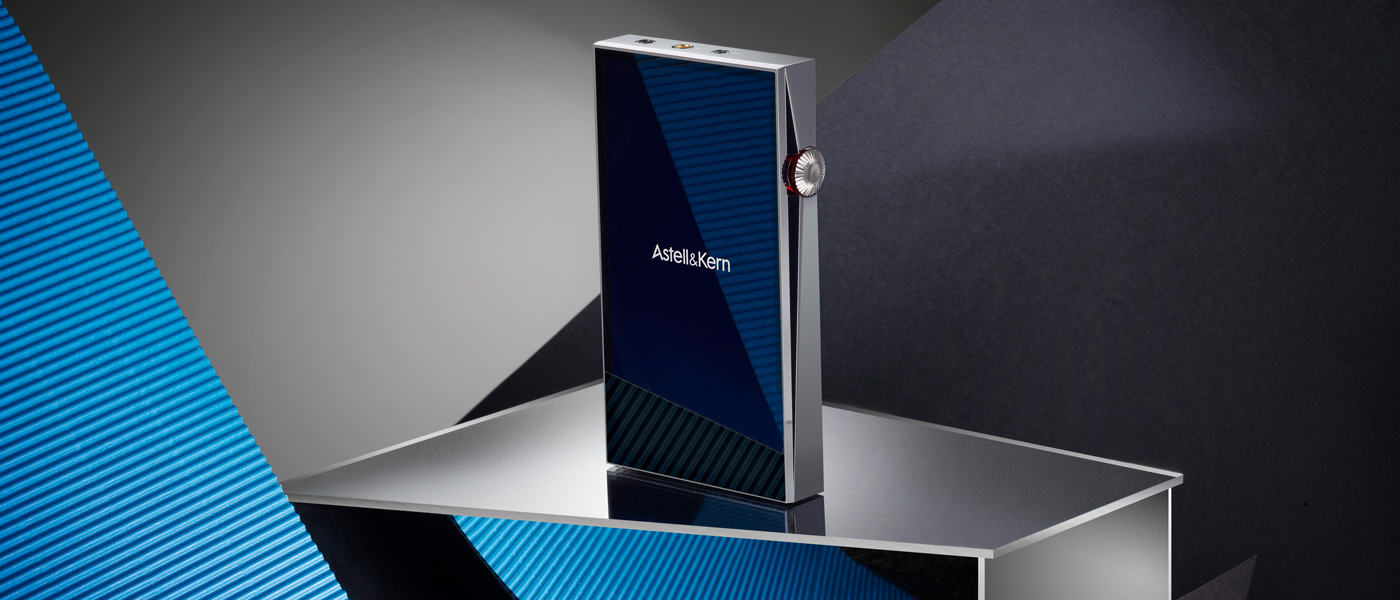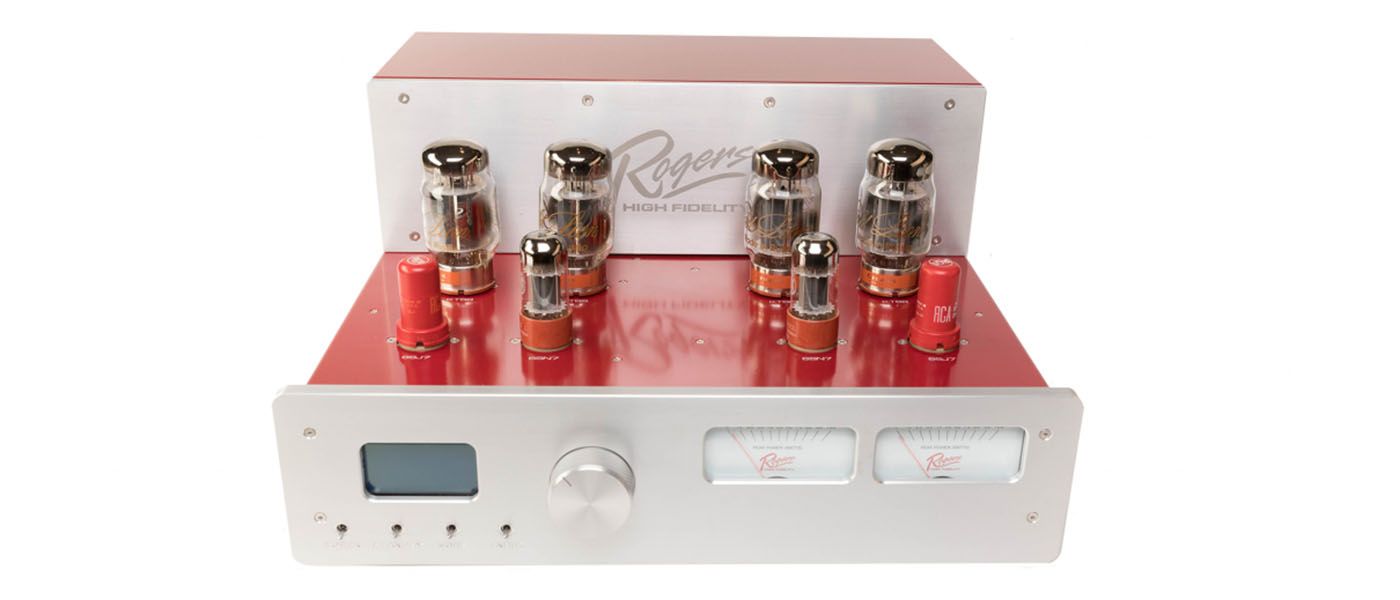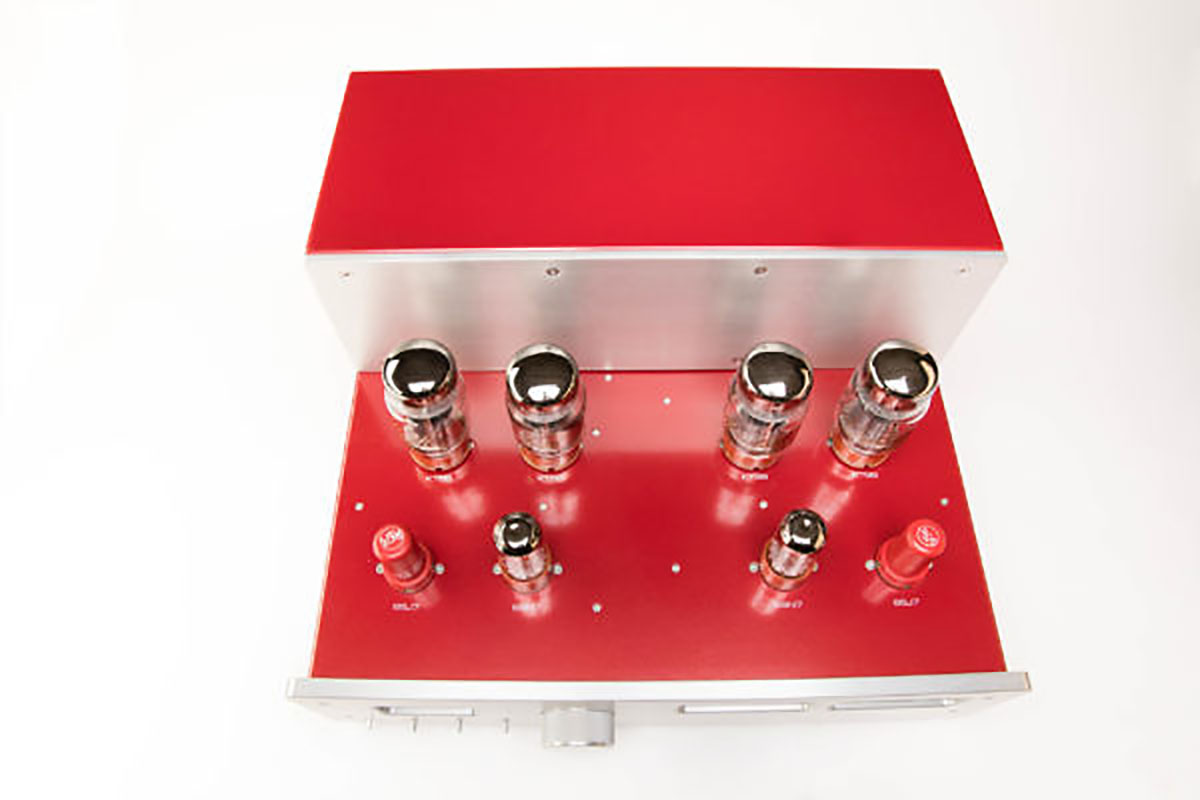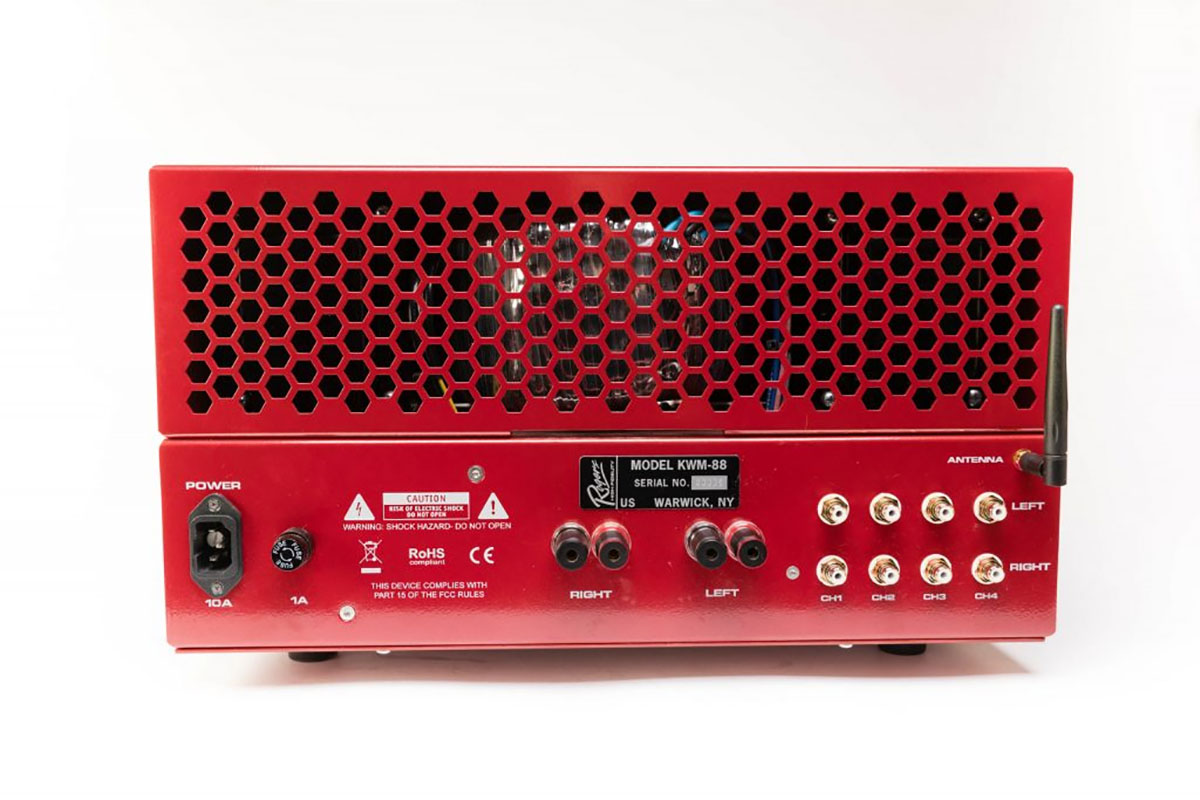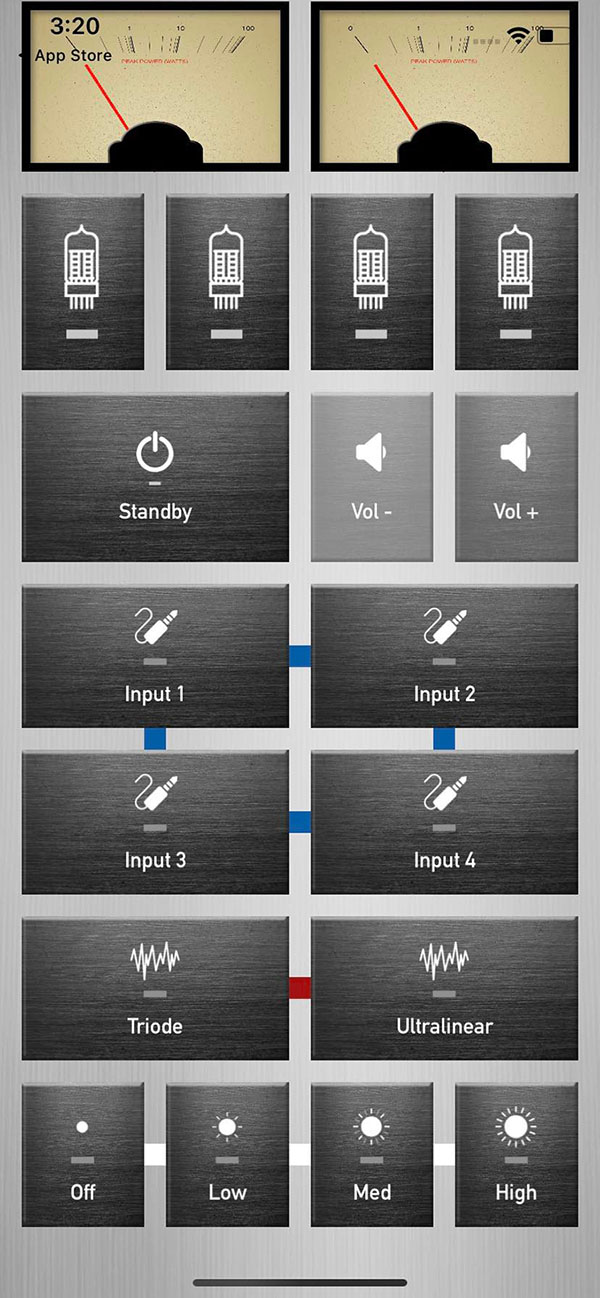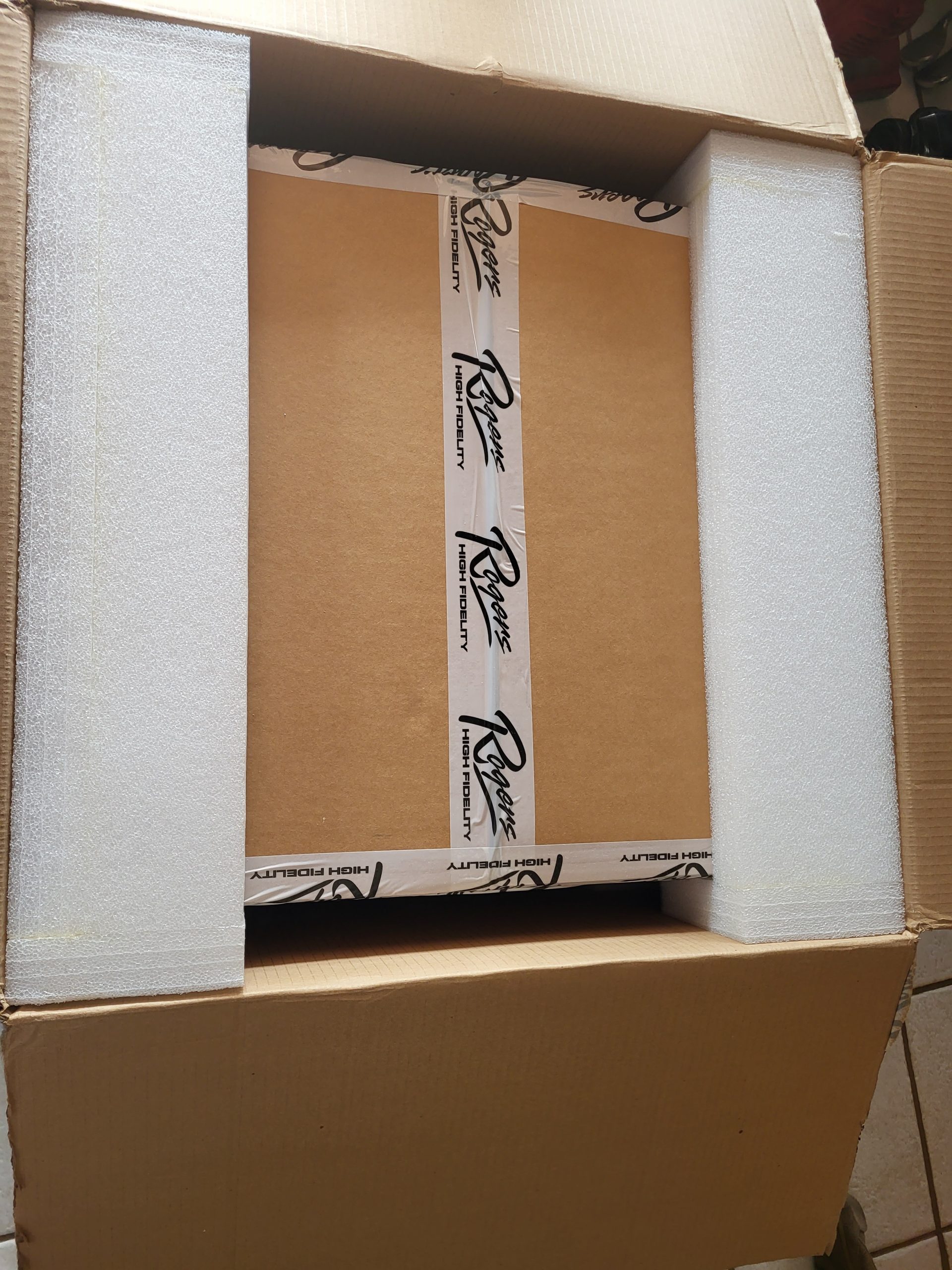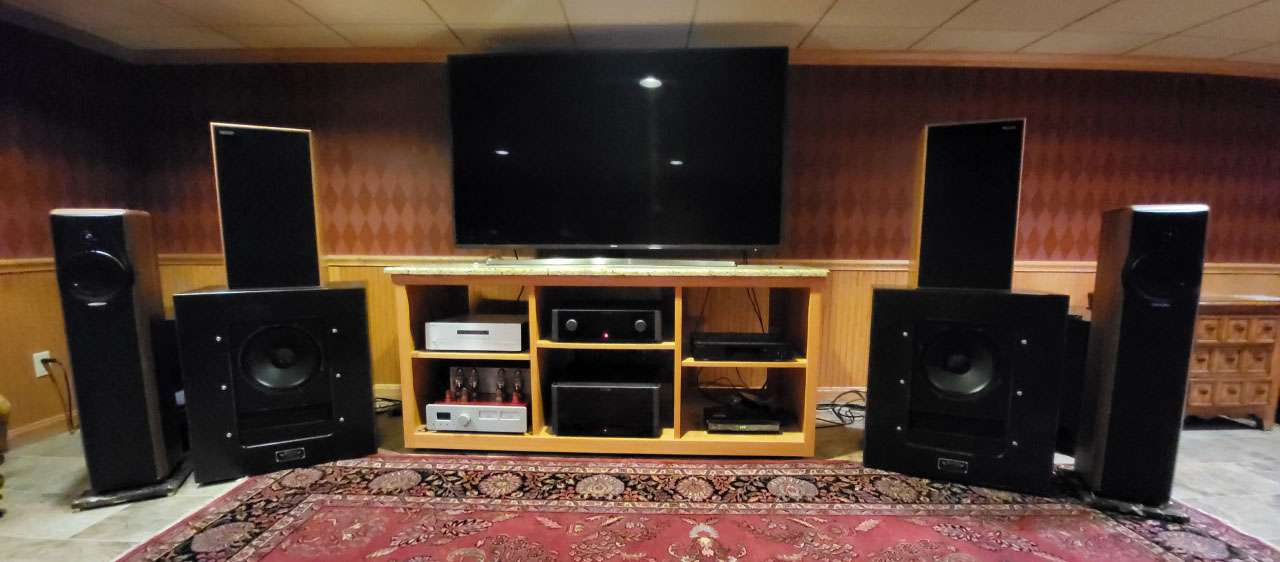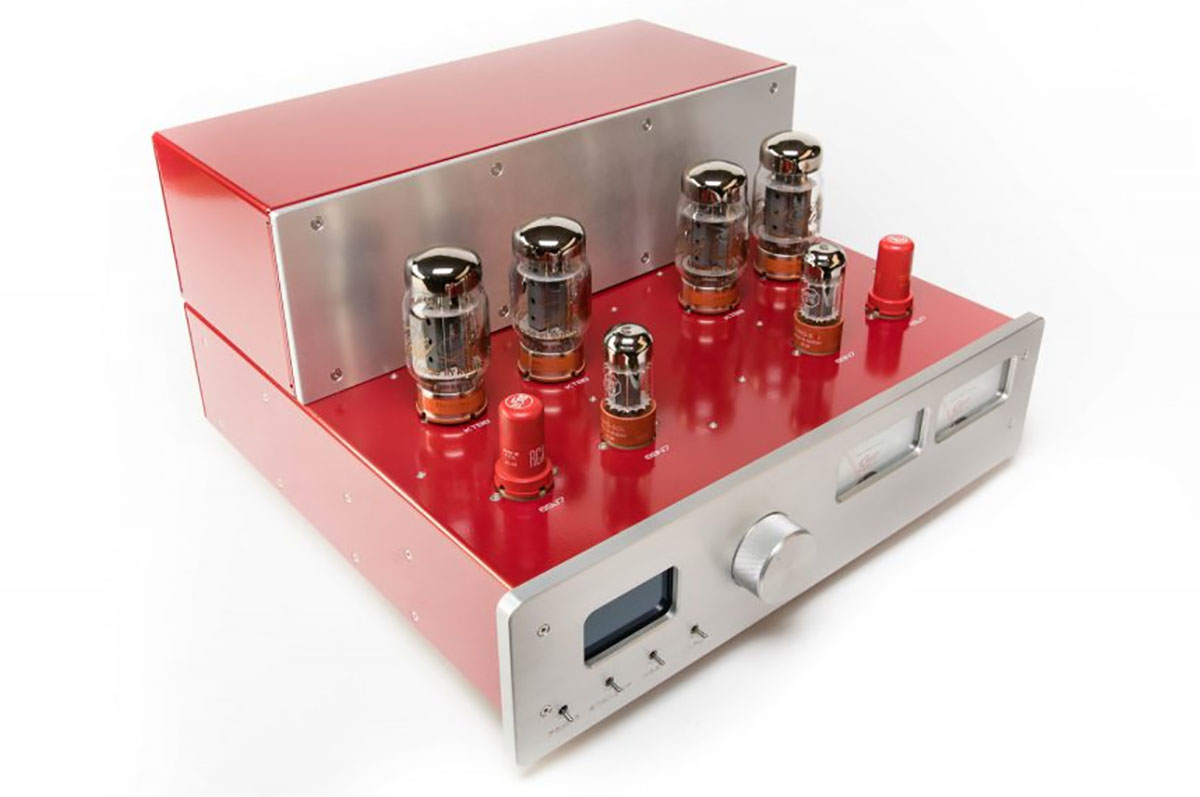Imagine an American amplifier company that makes a product with this claim: “We build each amplifier so your kids will fight over it when you’re gone.” Rogers® High Fidelity makes this claim, along with a host of others, on its website. For this review, your humble scribe was allotted 90 days to discover whether or not the KWM-88 integrated amplifier warrants such a claim.
Rogers High Fidelity KWM-88 Integrated Amplifier
- Tubes! (more on this later)
- Class ‘A’ operation
- Ultralinear or Triode Option at the flick of a switch
- Made in the USA
- Aerospace build quality
- Lifetime Guarantee
- Assembled and wired by hand
- Linear power supply
- 18-gauge military spec, silver coated, copper wire
- Cryogenically aged tubes
- Extensive, 100-hour test before your amp is shipped to you
- iPhone App remote control operation
Audiophiles and music lovers typically go through an evolution about what is most important in terms of one’s decisions for components purchased. We all have a time period in which reading the specs to our buddies is half the fun of owning the component. Later in life, we move on to the idea that we lose some interest in things like watts per channel and damping factor to a deeper obsession in a “does this component make me want to listen to more music?” stage. Well-designed tube amplifiers have hit that spot with music lovers for decades. At almost any price point, one can find a solid-state amplifier that can deliver a lot more power than can a corresponding tube amp. Personally, I have in my reference system an $11,400 pre-amp/power amp package that delivers five times the power of the KWM-88, which sells for $14,700. The pre-amp has a wealth of inputs and features well beyond what the Rogers® amp has. We are going to go deep here and find out just how well this tube amp stands up to some serious competition.
Tube Component:
2x 6SJ7, 2x 6SN7, 2x KT-170
Additional Tube Options:
KT-150, KT-120, or KT-88 – See Roger for Details
Frequency response:
+ 0.1dB from 20Hz to 20kHz
Power Output:
Ultra Linear @ 100 Watts RMS @ 1% THD, 150 watts @ 3% THD, Triode Mode 80 Watts RMS
Gain:
35dB
Input:
4 Unbalanced @ 100 kOhm
Output:
2 Ohm to 32 Ohm
Weight:
60 Pounds
Dimensions:
17” Wide, 14” Deep, 11.5” High
Modes:
Ultra Linear/Triode Mode Switchable via iOS app or Front Panel
Warranty:
Transferable Limited Lifetime Warranty
Price:
$14,700
Website:
Company:
SECRETS Tags:
rogers high fidelity, kwm-88, integrated amplifier, tube amplifier, class-a, amplifiers reviews, amplifier review, reviews 2022, amplifier reviews 2022
- Margules i240 Stereo Tube Integrated Amplifier
- Black Ice Audio f22 Integrated Tube Amplifier Preview
Any discussion of the design of a Rogers® High Fidelity amplifier starts with the lead designer. Roger (who likes to just be called just that: Roger) has both a BSEE and an MSEE from Drexel University. He spent years designing and manufacturing communications and radar equipment for the U.S. Department of Defense and NASA. Roger is the type of engineer who could easily have made a six-figure income just by continuing his work in the defense and aerospace industries. There is an old joke that goes something like this: How does one get a million dollars in the world of high-end audio? Simple, start with FIVE million, then found an audio company. What convinced Roger to leave the security of a very high-paying job was his confidence that he could make products that were something special.
Secrets Sponsor
Rogers® amplifiers, including the KWM-88 under review here, are hand built at the company’s factory in Massachusetts. In the analog sections, no chips are used. The amps are constructed with individual, discrete components and point-to-point wiring. The wiring itself is an 18-gauge silver-plated copper wire with Teflon coating. This robust wiring delivers, in Rogers® testing, a superior transient response compared to most companies’ less stringent standards for internal wiring.
The power supply is a toroidal transformer that weighs 30 pounds by itself. It is over-engineered to be able to produce over 1800 watts of power for an amplifier that delivers 300 watts at its maximum RMS rating. The transformer makes no mechanical noise, and its ultra-low magnetic flux noise translates into an amplifier that won’t interfere with other audio components. This design philosophy also allows for massive dynamic headroom and an amp that is never stressed under any operating conditions one can imagine in a domestic environment. For those who are not into electronics, an analogy would be something such as this: This transformer is similar to having a Ram 3500 diesel that’s capable of towing an 18,000-pound trailer pulling a 3,000-pound boat. The diesel won’t even know the boat is there.
One aspect of tube amps that can be off-putting is the requirement that one manually set and re-set the bias as tubes age. The KWM-88 has an auto-bias system that does this for you. If a tube is close to failure or is too far outside its operating specifications, the system will shut down, and the owner can contact Rogers® for service. The KWM-88 is about as easy to operate and maintain as one could want.
Roger has a very deep affection for tube amplifiers. He genuinely believes (as do many others) that tubes make better music than do solid-state amps. He wrote this summary about tubes: “Tube amplifiers have clipping and saturation characteristics that produce harmonic content differently than solid state devices making them sound richer and more natural (musical). Additionally, tubes are electric field devices rather than current devices and reproduce thermal noise in a truer fashion – this yields a more dynamic soundstage with richer detail and a more natural sound. Natural harmonic and noise reproduction make tube amplifiers a warmer more desirable amplification process.”
The rear panel is simple yet elegant. There are four gold-plated RCA inputs along with speaker binding posts made by Furutech from oxygen-free copper billets, milled, then gold plated. When a company offers a lifetime warranty that can be transferred to the next owner, quality is expected. The KWM-88 is the most over built audio product I have ever experienced.
Of note with the KWM-88 is an app that allows one to use an iPhone as a remote control. One can see the power meters, check on the health of the tubes, put the unit into stand-by mode, switch inputs, adjust volume, switch between Ultra-Linear mode and Triode mode and even dim the lights on the amplifier. This app brings in a nice touch of modern convenience to an amplifier that is built to old world standards.
The KWM-88 setup starts with the unboxing. Roger is so proud of the protection afforded his amplifiers that he dedicates a spot on his website to discuss it. The foam is dense and quite thick. I have never seen an audio component that was packaged more safely than this amp.
The review system was a very simple one. A Yamaha CD-S2100 CD/SACD player was directly plugged into one of the four analog (RCA unbalanced) inputs on the back of the KWM-88. The cables were Better Cable’s Silver Serpent AIR interconnect, and the speaker cables were Blue Jeans Cable 10AWG Belden 5T00UP in eight-foot lengths.
Secrets Sponsor
Speakers will be Harbeth SHL5-Plus XD (reviewed in August 2021), Sonus faber Maxima Amator (reviewed in August 2022), and a pair of AD-612 monitors I just got in for a review from The Heretic Speaker Company located in Quebec, Canada. Both the Harbeth and Sonus faber speakers are highly regarded for their detailed presentation of music. The Heretic AD-612s are a re-imagining of the Altec-Lansing 612 monitor speaker that was used, among other places, at the Abbey Road Studios in England. The nickname for these speakers is “The Beatles Monitor,” and they are considered an ideal speaker to be used with tube amplifiers.
Part of any setup, especially when dealing with a company whose products are new to you, is exploring the build of the product. The KWM-88 is heavy. It feels solid. The red finish looks expensive in a way that pictures do not convey. The volume knob is textured and feels like a high-end component on its own. The switches to select between sources (four in total) or Standby to Ultra Linear to Triode Mode really are military grade. They are solid metal and switch with an authority that lets you know that they will never break. The phrase “built like a tank” is so overused that it is a cliché. This amplifier is built like an aircraft carrier.
Turn it on, even into 97dB sensitive speakers, and one hears nothing. There isn’t a hint of hiss or hum. The KWM-88 just stares at you like a 300-pound prize fighter brimming with quiet confidence. There isn’t even a noise from the transformer when the unit is turned on. It merely lights up (including the power meters) and warms the room with the tubes. The KWM-88 is letting you know it is time for music.

Various “Masters of Acoustic Guitar”
The Harbeth SHL5plus XDs are known to be one of the most neutral and revealing speakers at any price. It is a hand-built British monitor with over 50 years of BBC-licensed technology and design behind it. I have owned them for over a year, and they have proven themselves with a variety of amplifiers, including amps from Michi, Axiom, Cambridge Audio, and even a couple of pro amplifiers. A favorite disc with these Brits is “Masters of Acoustic Guitar,” and the KWM-88 impressed right out of the gate. Don Ross’s “Afraid To Dance” started the music from the Harbeths from a totally “black” background. There was no feel for speakers and amplifier being present, just Ross playing an acoustic guitar. The weight of his hand on the guitar body was palpable and combined with the complete lack of noise from the amp, a sense of realism took over immediately. This disc is a tremendous place to spend an hour after a long day, and the KWM-88/Harbeth combination was properly done to the point that I was disappointed when the disc ended.
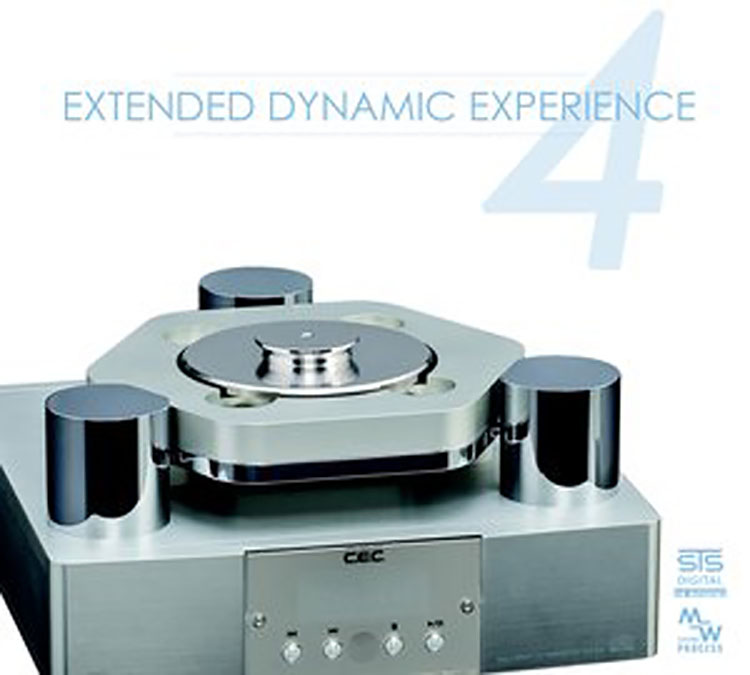
Various “Extended Dynamic Experience”
The next disc with the Rogers/Harbeth duo was “Extended Dynamic Experience 4.” This is a collection of exceptionally well-recorded tracks and was originally used to demonstrate speakers from Tingsha Audio, Grandinote amplifiers, C.E.C. CD players, and Metrum Acoustic’s DAC (this is a system priced well into six figures). It is a treasure trove of audio excellence, opening with “Flight of the Cosmic Hippo.” The KWM-88 was astonishing through the Harbeths. It’s difficult to compare amplifiers that one hasn’t heard recently, but what this speaker/amp pairing did with the bass lines from the “Hippo” was wonderful. “Blues Wine,” from Dede Priest, is the fourth track on this compilation, and her vocal range was shown off with ease.
Ease is the best way to describe what the KWM-88 can do with a pair of ultra-high-resolution speakers like the Harbeth SHL5plus XDs. At all volume levels, there was never a sense of strain from every source I threw at this pairing. Misrill Lull’s “Percussion” is almost six minutes of a system challenge, from the kick drum to the snare, and the KWM-88 made the Harbeths sound like a much larger speaker than they are. This is a pairing that I could live with happily, even without a subwoofer.
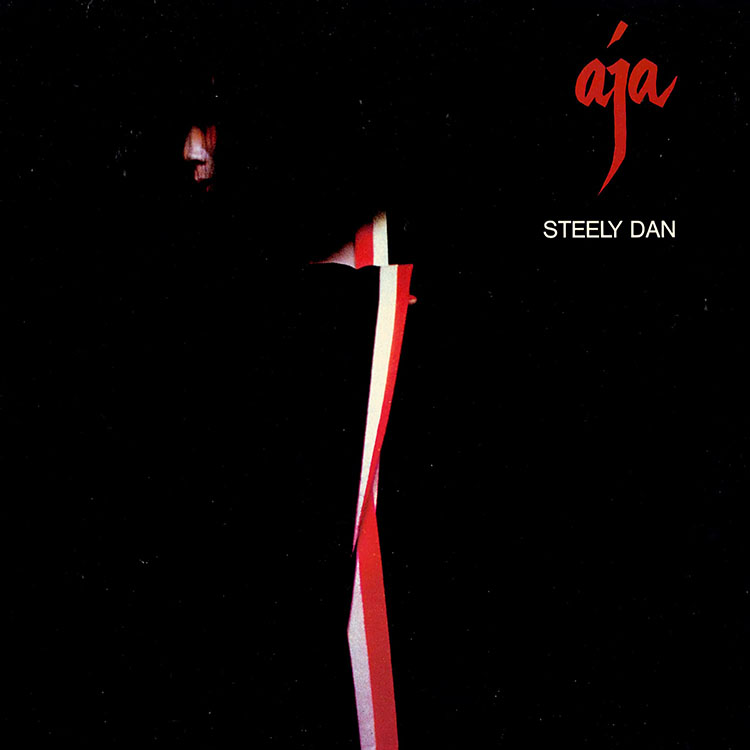
Steely Dan “ája”
As much as I enjoyed the pairing of the Rogers and Harbeth’s, the Sonus faber Maxima Amators seemed to be made to match up with this fantastic tube amplifier. The first disc entry was Steely Dan’s “Aja,” and it was an excellent choice. The opening bass in “Black Cow” was startling in its depth and power. It was the type of quality that makes one sit up and think “So THIS is why one spends $30K on a pair of speakers and a matching amplifier. The drum solo in the title track was laid out with transparency and power that took these speakers to an even higher level than when I reviewed them this summer. “Deacon Blues” has been, for 45 years, a song that is very emotional for me. It was a hit was I was graduating high school, moving on from a small town, and leaving my home. This pairing brought me back to 1978 in a wave of nostalgia that was really enjoyable.
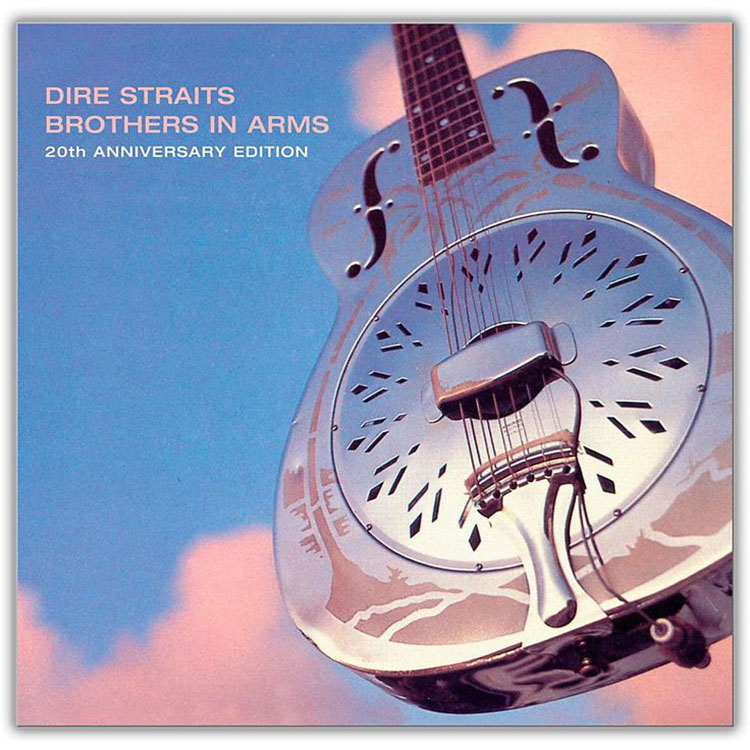
Brothers in Arms “Dire Straits”
Aja was able to show that the KWM-88 has some real gusto, the decision was made to fire up the SACD of Dire Strait’s Brothers In Arms. It opens with “So Far Away,” and the bass drum with Knopfler’s vocals has guts and grit galore through these tubes. How is a tube amp with a seven-inch woofer hitting this hard? “Money for Nothing” is hard driving with the guitar work allowing the deliberate distortion to play through with the clarity of much larger speakers and amps. When Sting enters the performance, it is borderline spooky. On both of the classic discs, the KWM-88 drove the Sonus fabers to a louder level than I ever listen and did so with a clarity and authority that left me with a smile on my face.
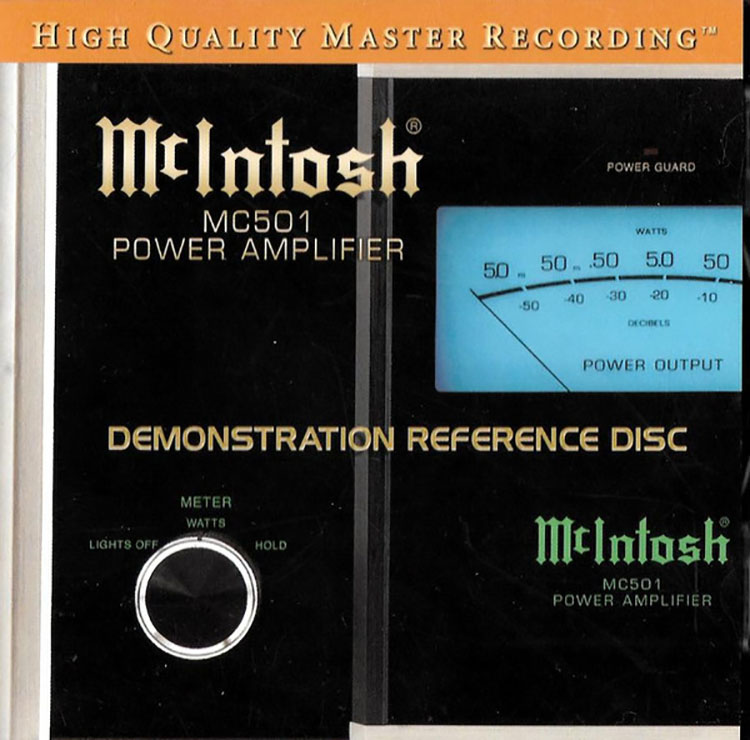
Various “McIntosh MC501 Power Amplifier Demo CD”
The third disc for this review is the fabulous McIntosh Labs “MC611 Power Amplifier Demonstration Reference” disc. It is a Japanese-produced SACD of 15 tracks of the most compelling classical music recordings ever made. Track 2, a duo of Violin and Cello, is awe-inspiring in its presence. The KWM-88 brought the Cello to life and the Violin to emotion. The artists switch back and forth from finger plucking to using the bow and do so with such quickness and talent that it is mesmerizing, even for a rocker like me. While no amp and speaker, regardless of what anyone states when describing a stereo system, can bring the majesty of an 80-plus member orchestra into one’s room, a proper system can take one into the orchestral hall by giving a good dose of the power along with the stage size. On Aaron Copland’s “Billy the Kid,” which is an orchestral translation of the infamous gun battle in the ballet, the percussion of the gun battle does make one feel like one is in the performance to a degree that one forgets about speakers and amps. This entire disc is a musical treat and is so well recorded, that I am adding it to my reference disc collection. The KWM-88 continued its success with the Harbeths with further success on the Sonus fabers. Tube amps are not supposed to have this much in the way of raw power, but this Roger’s amp does. It has all the magic that tube amps are known for with all the power and bass of a high-quality solid-state, class A, or AB amplifier.
The Heretic Speaker company is a relatively new player in the arena of high-end loudspeakers. I currently have a pair of their flagship speakers, the AD612, in for review. It is a large monitor-style speaker (which can also be used on the floor depending on your preferences and sitting position) which uses a 12-inch woofer in a coaxial design with a compression driver. The full review will dig deep into the performance of this versatile speaker, but it’s proper to discuss why it was added to this review.
The AD612 was inspired by the Altec-Lansing-designed studio monitor which was popular in the 1960s. Abbey Road Studios used it, and its nickname is “The Beatles Monitor.” It is a speaker capable of exceptional clarity and being mentioned in the same breath as Quad Electrostatic loudspeakers is not hyperbole. The pair I have here completed over 300 hours of break-in and were ready for prime time.
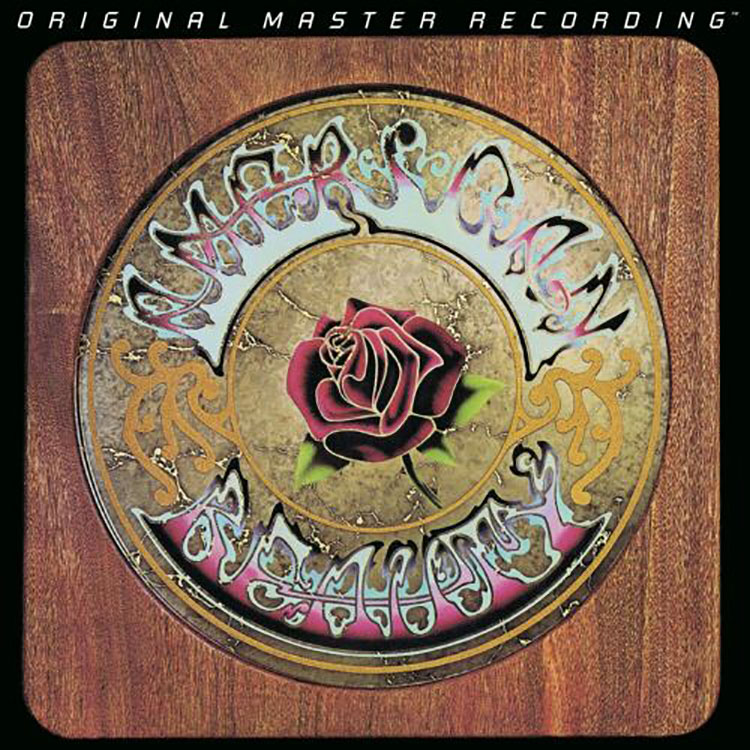
Grateful Dead “American Beauty”
The first disc with the Heretic speakers was the SACD of Grateful Dead’s “American Beauty.” It’s a MO FI re-release and a tremendous disc. The guitar work on “Friend of the Devil” is the real star, and this combo of speaker and amp allows every note to come through with more clarity than I have ever experienced with this disc while delivering the elusive musical quality that I remember from listening to it on my analog systems in the late ’70s. These Heretic AD612s are already making me smile a lot with their reproduction of music, and the Yamaha CD-2100S, Rogers KWM-88, and the Heretics are shining in their collective abilities to be both high-resolution and “analog warm” simultaneously.
The track “Operator” features Rob (Pigpen) McKernan on vocals, and the engineers put a bit of “hall ambience” into his voice. Lesser systems miss this, but this system delivers it with all the warmth intended. The harmonizing on “Ripple” and “Broke Down Palace” cemented the deal: This amplifier, when fed high-resolution material, shines with male voices.

Alanis Morissette “Under Rug Swept”
Next up was Alanis Morissette’s “Under Rug Swept.” This SACD is Ms. Morisette at her angriest (Narcissus and So Unsexy) and her gentlest (Surrendering) all within a 50-minute performance. It’s a great test for any speaker’s abilities to handle female vocals, plus there is some great music mixed into all the angst. The KWM-88 was more than up to this task as well, and her voice is absolutely clear on every track. The Roger’s KWM-88 has, through many hours of listening, proved it is one fine music maker.
Has The Reviewer Missed Anything?
In every review, there are a few things the reviewer regrets. In this review, I mentioned how well the KWM-88 did with three speakers that have a “bass floor” in the mid-30Hz range. This amp is rated down to 5Hz (-3dB). I found myself wondering what they could do with a true, full-range speaker that has a bass floor below 20Hz. As I don’t have anything in my system now that can hit that level of bass, I decided to try something a bit more radical. I have a passive 18-inch subwoofer that uses an Eminence 18-inch driver in a sealed configuration. Just to be adventurous, the KWM-88 was used as a subwoofer amplifier by plugging one channel into this passive 18-inch driver and some tough movie tracks were applied. Here we were, playing the “Pod Racer” scene from Phantom Menace through a tube amplifier driving an 18-inch passive subwoofer. Next up was the gunfight scene from “Open Range.” We experienced floor-shaking bass, giving up maybe a few dB to a high-powered, dedicated subwoofer amp, but still powerful and clean. This is a versatile amplifier that can handle everything one can throw at it. Any concerns about driving a large, full-range speaker were answered in this portion of the test.
The ROGERS KWM-88 INTEGRATED AMPLIFIER is a powerful, bullet-proof tube amplifier that can drive almost any speaker with clean power and an inaudible noise floor. It’s an amp that will make you believe that a tube amp can be as powerful as a solid-state amp.
- Powerful
- Quiet
- Musical
- Gorgeous Chassis
- Tubes at Night
- Lifetime Warranty
- Built Like an Aircraft Carrier
- Made in America
- iPhone App
- Can Drive Almost Any Speaker
- App for Droid Phones
It’s unusually feature-laden for a tube amp, with auto bias that allows one to experiment with different tubes easily and the iPhone app that brings remote control and system monitoring into one’s hand. As the hub of a music system, it is an outstanding value for under $15,000.
My first high-end stereo system was purchased in 1978 when I was 18. The amplifier was a Marantz 3600 Pre-amp with a 510M power amp. It was an all-metal chassis and built like it was made to last forever. That system was stolen in 1983. Three years ago, I found an original 3600 and 250 pre-amp/power amp and purchased them. Even 44 years later, they still work perfectly and deliver sound quality that easily keeps up with the very expensive amps of today. The KWM-88 reminds me a lot of the Marantz pair, but with even better sound and build quality. Everything about this amplifier is of the highest quality. Regardless of the mode selected between Ultra Linear or Triode, music is delivered with no noise or distortion. Bass is deep and tight, the type of bass one usually gets from a five-figure Class-A solid-state amp, and the sound stage is deep and wide. The Rogers® KWM-88 Integrated Amplifier is everything Roger said it would be – it’s a wonderful-sounding amplifier that is built to last a lifetime.


